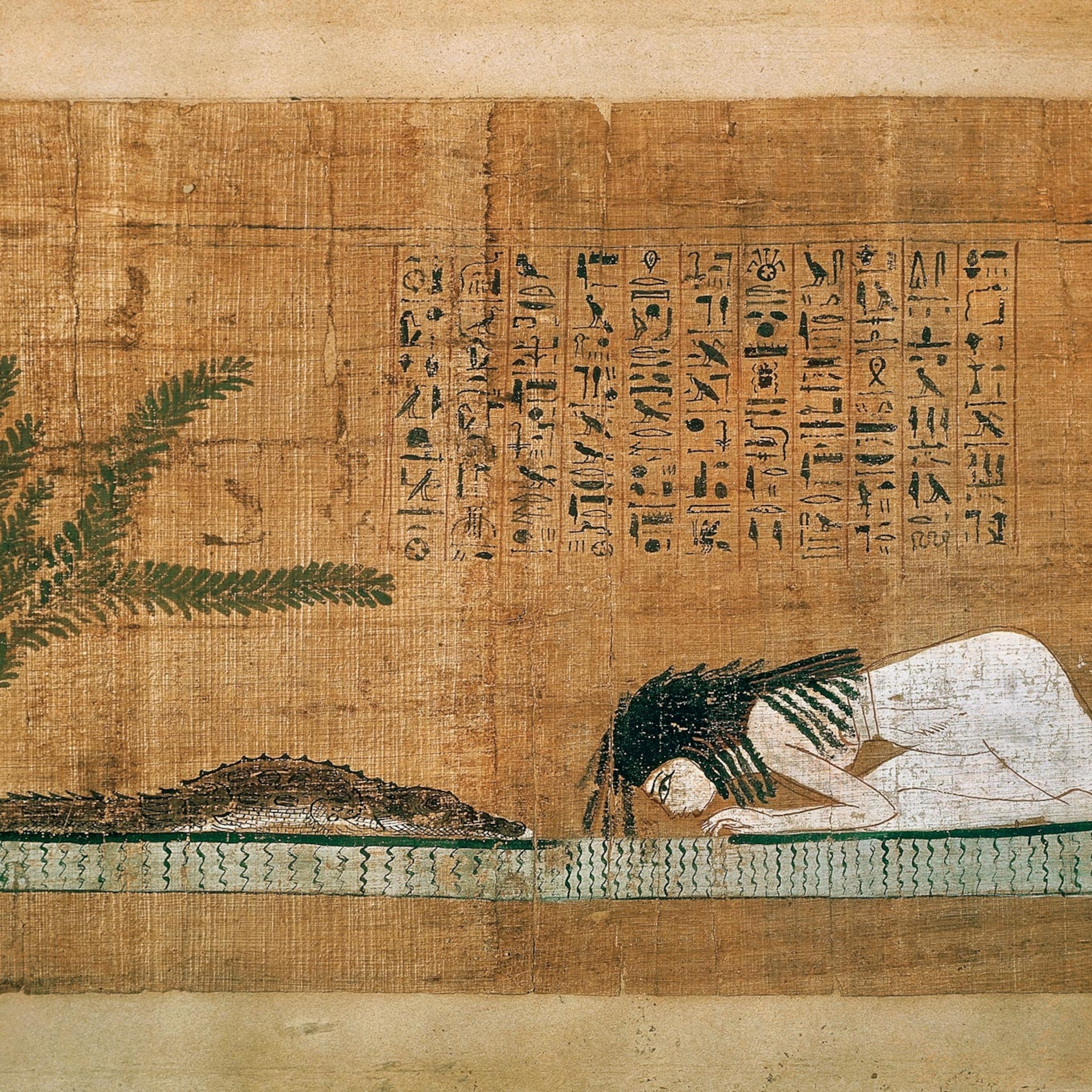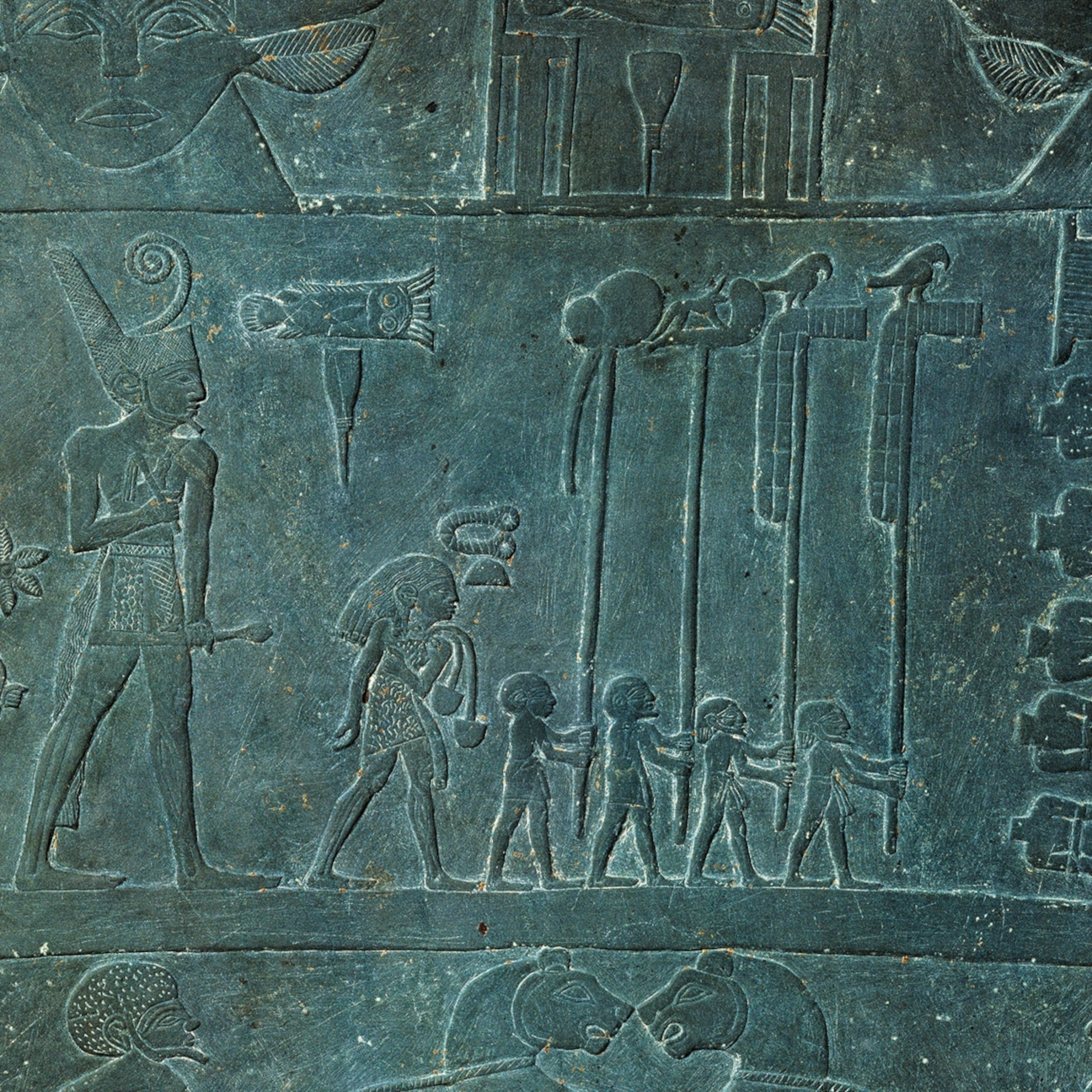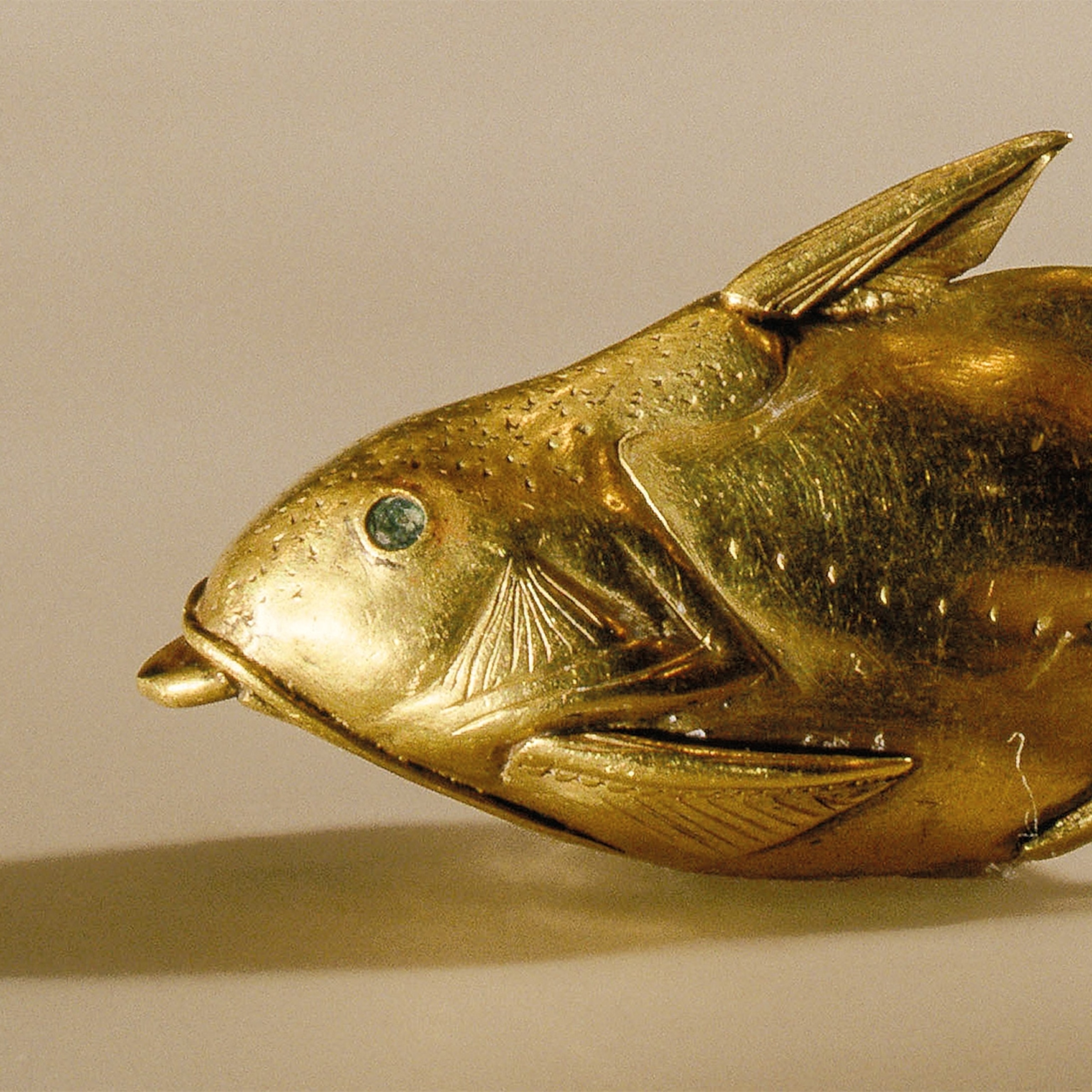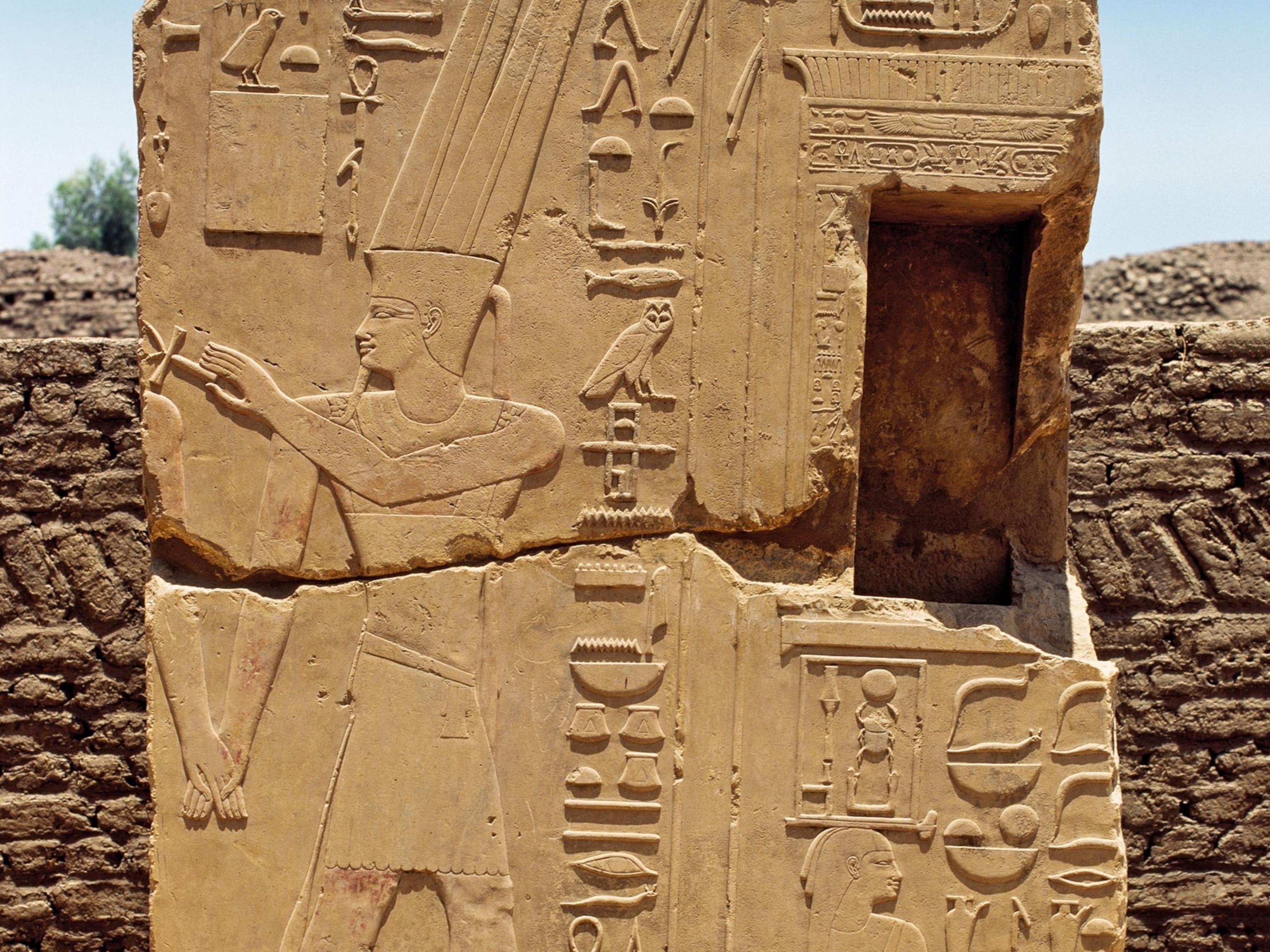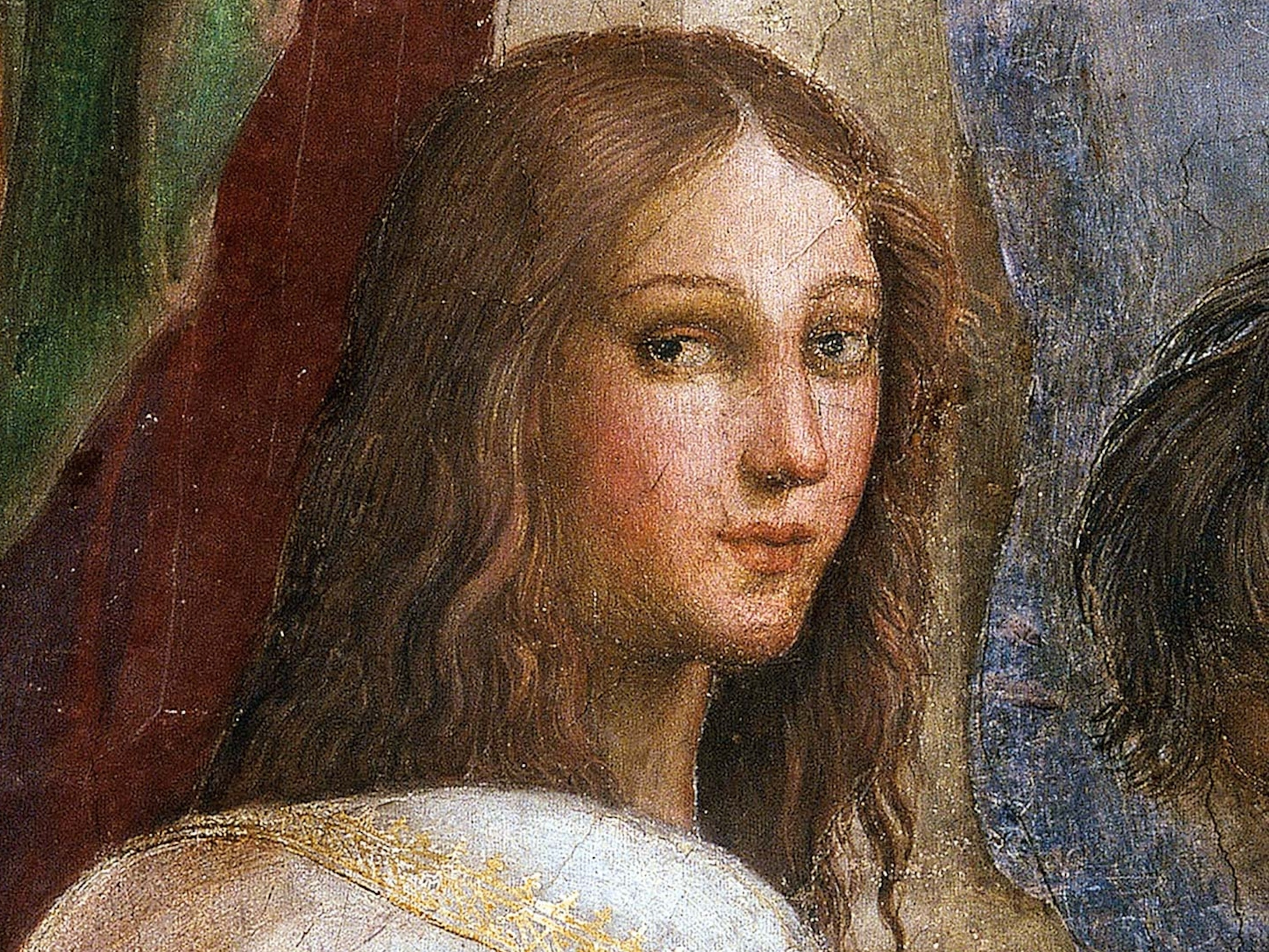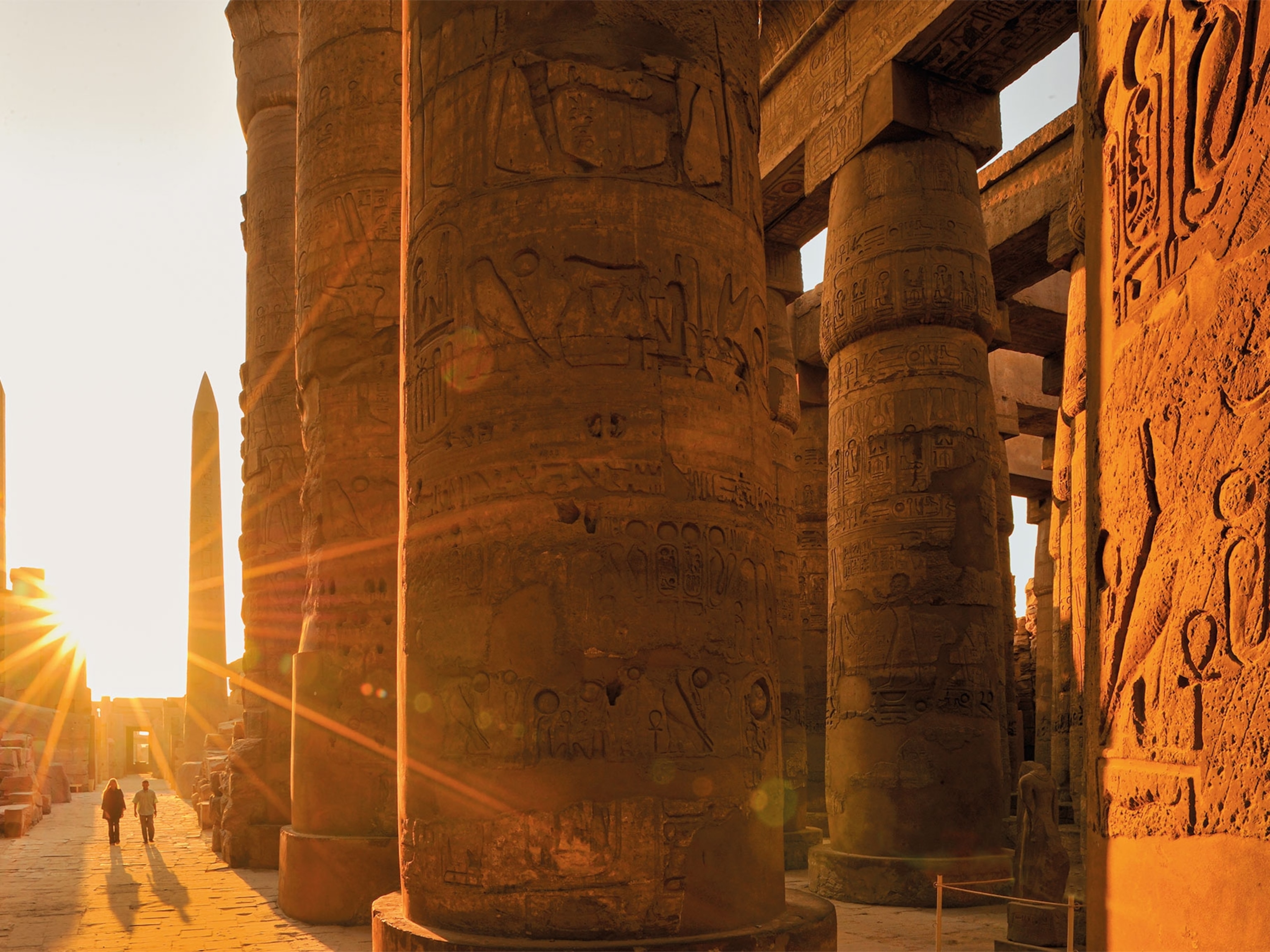Egypt’s pharaohs welcomed summer with this fabulous festival
When the Nile flooded, Egyptians celebrated the feast of Opet, a joyous procession the carried statues of the gods from Karnak to Luxor.

Every year ancient Egyptians eagerly anticipated the coming of Akhet, the flooding season. Meaning “inundation,” Akhet was the all-important time when the Nile’s floodwaters replenished the land and restored Egypt’s fertility. This time of joyous renewal was also when ancient Egypt held one of its most spectacular and most mysterious festivals: the Feast of Opet.
Opet was celebrated in the city of Thebes, and the centerpiece of the festival was a grand procession from Karnak to Luxor. In these processions, statues of the city’s most sacred gods—Amun-Re, supreme god, his wife, Mut, and his son, Khons—were placed in special vessels called barks and were then borne from one temple to the other.

Opet’s formal name is heb nefer en Ipet, which translates to “beautiful feast of Opet.” The word opet or ipet is believed to have referred to the inner sanctuary of the Temple of Luxor. So important was this festive event that the second month of Akhet, when the feast typically occurred, was named after it: pa-en-ipet, the [month] of Opet. During the reign of Thutmose III (1458-1426 B.C.), the festival lasted for 11 days. By the start of the rule of Ramses III in 1187 B.C., it had expanded to 24 days; by his death in 1156 B.C., it had stretched to 27.
A new kingdom rises
The beautiful feast became a major celebration in the early New Kingdom (ca 1539-1075 B.C.) when the 18th dynasty came to power, after driving out the Hyksos invaders who had occupied the northern part of the Nile Valley for 200 years. Egypt’s new rulers wasted no time in making its capital city Thebes a vast ceremonial stage to celebrate the consolidation of power, and the Opet festival took center stage. (See also: How three rebel queens of Egypt overthrew an empire.)

Egypt displayed its greatness with impressive feats of engineering in the expansion of its two great temple complexes at Karnak and Luxor on the eastern bank of the Nile. One of the early pharaohs of the 18th dynasty, Thutmose I expanded the temple of Amun-Re at Karnak. His successors continued improvements to the temple’s ceremonial spaces, constructing processional avenues, courts, and pylons. Karnak grew to become one of the largest religious complexes, measuring nearly two square miles. (See also: Behind the Scenes of Ramses' Royal Wedding)
Famous for its soaring columns and statues of Ramses II, the impressive Luxor Temple was built between and during the reigns of Amenhotep III and Ramses II, circa 1400 to 1200 B.C. Archaeologists believe a smaller temple stood there originally before Amenhotep III, Tutankhamun, and Ramses II enlarged the complex and added a large court, numerous halls, a majestic colonnade, a pylon, and obelisks. (See also: Who was the Egyptian pharoah who challenged Moses?)
A Sacred Boathouse
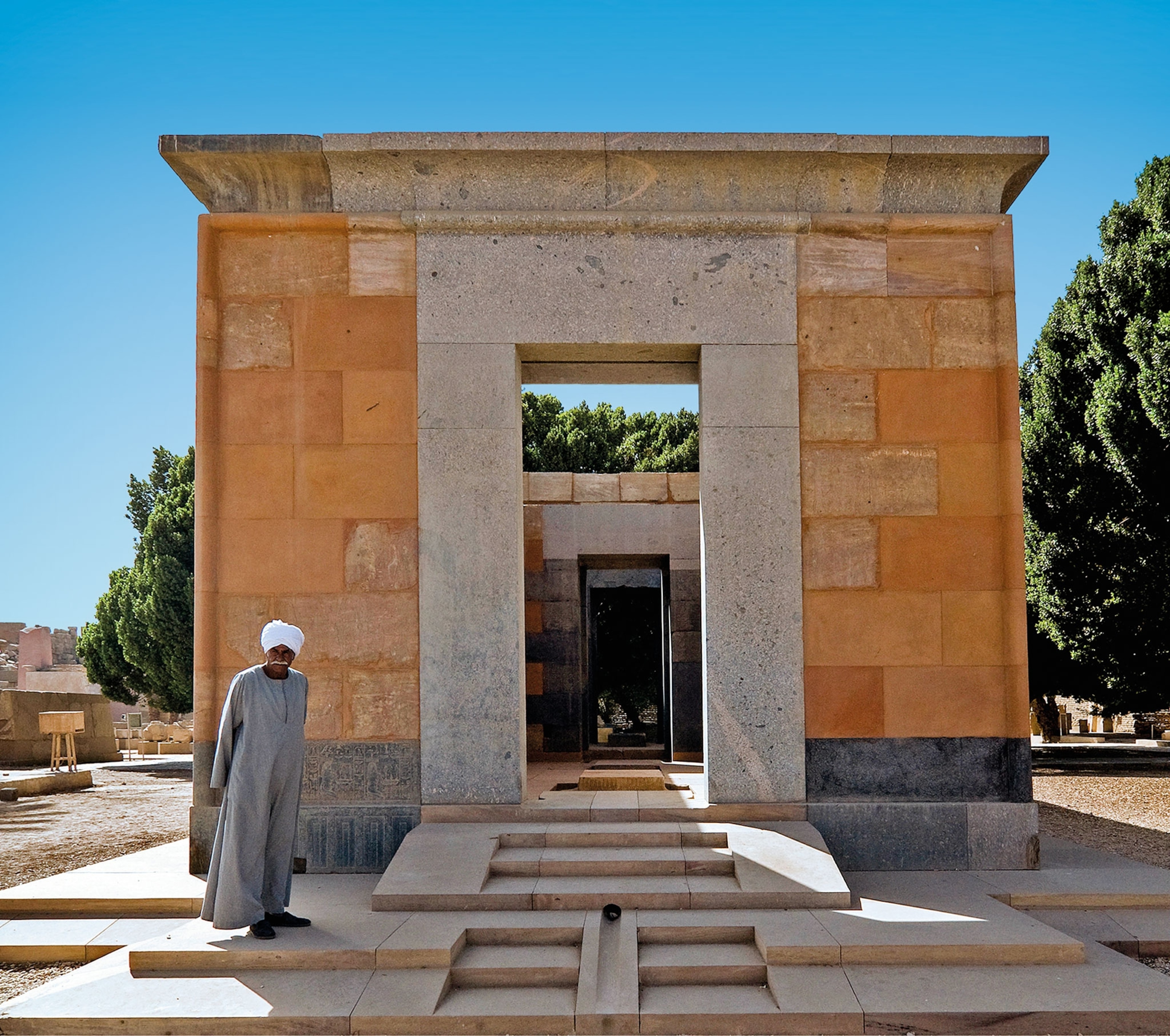
The oldest evidence of the Opet festival dates from the reign of Hatshepsut and consists of carvings on the south side of the Red Chapel at Karnak. Made of blocks of red quartzite and gray diorite, the chapel housed the sacred bark of Amun when not in use for Opet or other festivals.
Following the queen's death, her chapel was broken up, and parts of it used to fill in the third pylon of Karnak, built by Amenhotep III. Following an earthquake in the 19th century, the blocks were rediscovered. After painstaking research, and significantly aided by piecing together the scenes depicting the Feast of Opet, researchers were able to reconstruct the chapel. Its dimensions have also helped historians estimate the size of the bark that it housed.
The processional route between the temples varied with time, sometimes traveling by foot along the Avenue of Sphinxes, a road nearly two miles long and lined with statues of the mythical beasts. At other times, the sacred statue traveled from Karnak to Luxor in a specially made bark, known in Egyptian as the Userhat-Amun (“mighty of prow is Amun”). This vessel was built of Lebanon cedar covered with gold. Its prow and stern were decorated with a ram’s head, sacred to the god.
Evidence in pictures
Most of what is known about the festival is iconographic and comes from artwork found at the temple precinct of Amun-Re at Karnak, the Temple of Luxor; and the mortuary temple of Ramses III at Medinet Habu.
The earliest evidence comes from the Red Chapel of Queen Hatshepsut (reigned 1479-1458 B.C.). During her reign, only Amun-Re traveled from Karnak to Luxor. The reliefs from the Red Chapel depict the god’s shrine being carried by priests. Initially, the journey was made on foot, stopping at six altars constructed by Hatshepsut along the Avenue of Sphinxes that ran between the two temples. The reliefs then show both statue and the priests returning downstream to Karnak by boat.
The Luxor reliefs show the evolution of the celebration and how it changed over time. The colonnade, added during the time of Tutankhamun’s reign, has impressively detailed reliefs that give insights into Opet rituals and how they changed from the time of Hatshepsut. The artworks reveal that Amun-Re has been joined by his consort, Mut, and their son, Khons, in the procession. Some reliefs even show the ruling pharaoh as part of the group.
Changes in the route can be seen in the artwork at Luxor. The statues of the gods traveled in both directions along the Nile rather than along the Avenue of Sphinxes. During the outward trip south, against the flow of the river, the bark was pulled by other boats and by people on the riverbanks. High-ranking officials who took part regarded rowing the boats as a great honor worthy of being recorded in their life stories. During the journeys along the river, the barks were escorted from the shore by soldiers, dancers, and bearers of offerings, among them fattened oxen that were to be sacrificed.
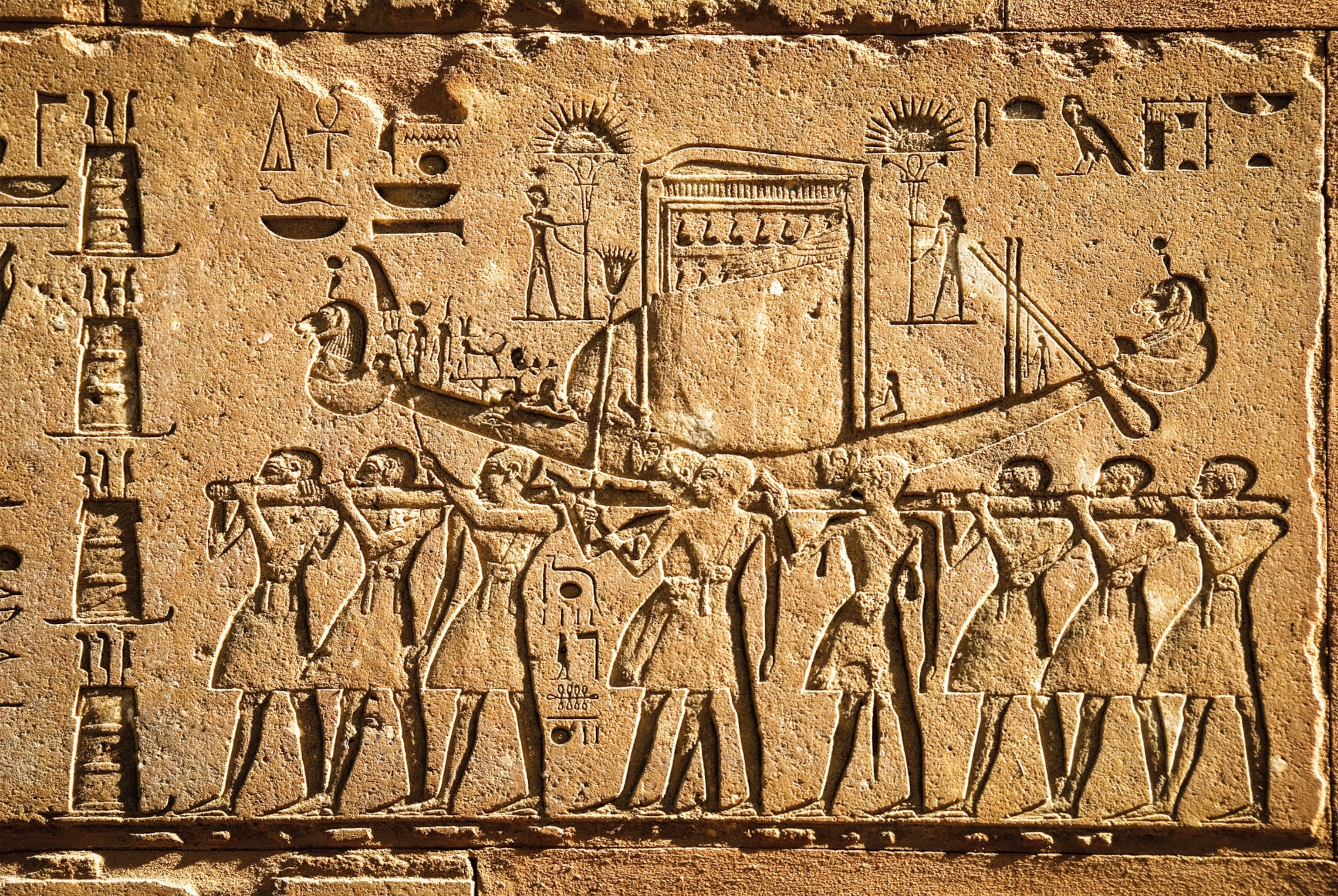
The reliefs make a great effort to depict the grand spectacle: Many priests support the barks and statues, while a crowd makes a joyous din with sistrum rattles. The gods’ barks were brought alongside the jetty at the Temple of Luxor and were carried on the shoulders of the priests to the sacred precinct. A series of ceremonies were conducted in the outer courts, after which the barks were taken into the inner sanctuary, accompanied solely by high-ranking priests and the pharaoh. Once the ceremonies were completed, the barks returned downstream to Karnak.
Mysteries of Opet
Even though the surviving reliefs provide considerable information about the processions, they offer no indication of the exact purpose of the rituals performed at Luxor. Despite the conspicuousness and majesty of Opet in art- works, no text describing the event survives. Neither have traces of a processional bark from the festival ever been found.
One popular theory is that the Opet rites confirmed the monarch’s possession of the royal ka. This life force inhabited the bodies of all legitimate pharaohs of Egypt and passed from the old to the new on the latter’s death. An annual confirmation of such a process would help bolster the king’s authority. (See also: Egypt's pharaohs delivered divine justice, even from beyond the grave.)
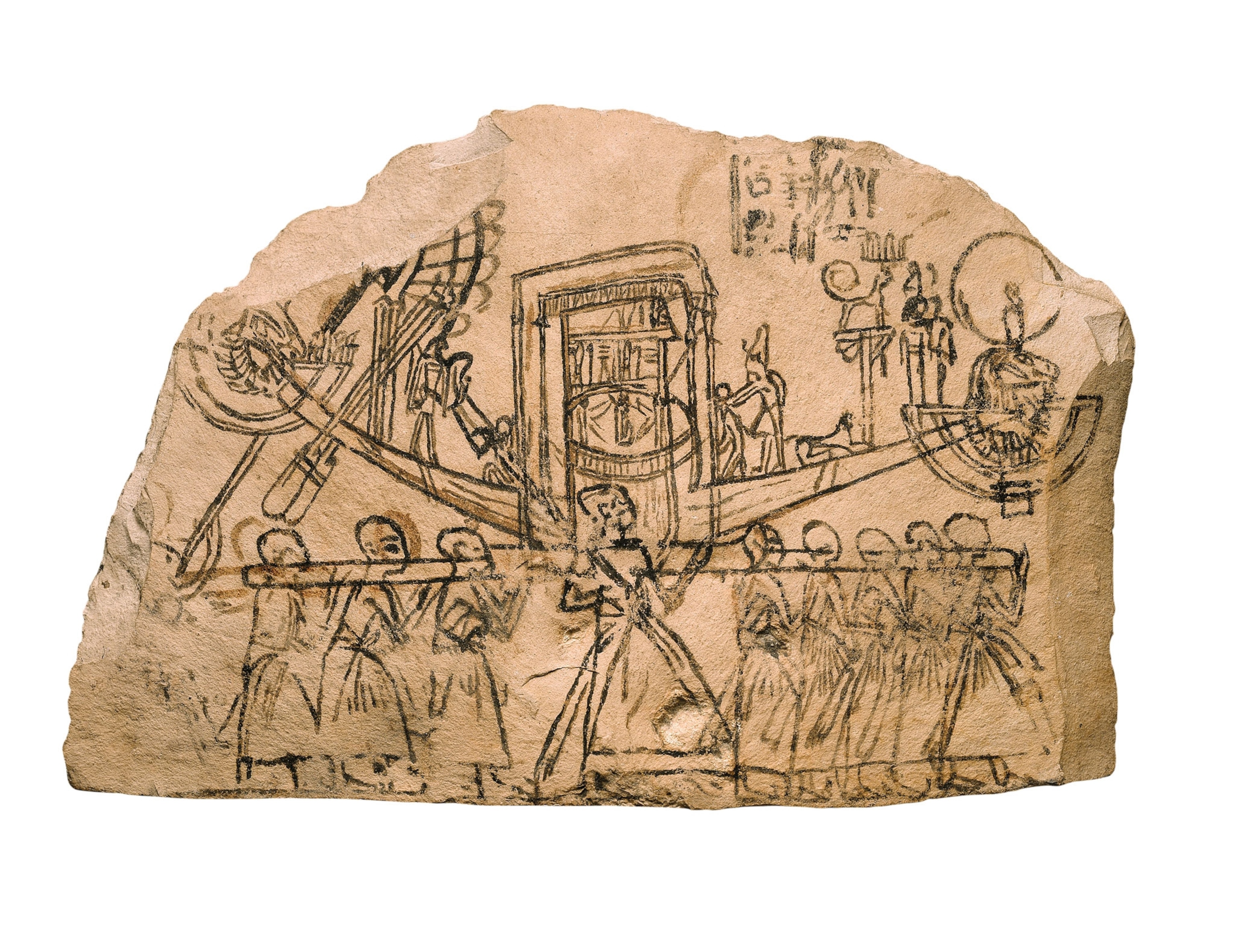

Horemheb, the last pharaoh of the 18th dynasty, had been a military commander during the reign of Tutankhamun, and had probably been his official heir despite not being a blood relative. Horemheb restored order to Egypt after the chaotic rule of Akhenaten, who upended Egypt’s religious and civic order. Horemheb’s coronation took place during Opet, a return to Egyptian tradition that may have granted him legitimacy in the eyes of the people and the gods. If the ceremony identified him as the son of Amun-Re, then his claim to the throne would be strengthened even though he was no blood relation to the previous rulers.
Scholars also believe that the festival represented the renewal of the gods’ divine life force. The journey from Karnak to the temple in Luxor restored the power of Amun-Re and his family, strengthening them and the land of Egypt as well.
The reliefs at Luxor and other sites give insight into the careful management of the event, which helped reinforce religious and royal power while harnessing optimism at the dawn of the new year and a new agricultural cycle. Three songs inscribed in hieroglyphics at Luxor reveal the words chanted by priests and priestesses. These songs seem to be very ancient since fragments are found on monuments dating from the Old Kingdom. The general population also joined in the festival and accompanied the procession.

A popular feast
If the noisy, festive aspect of Opet provided a contrast to the priestly rituals, the festival’s emphasis on food was also appreciated by the populace. Reliefs at both Karnak and Luxor temples show the details of Opet feasting. On one panel at the Temple of Luxor, Amenhotep III is depicted presenting the bounty for the festival: Bread, fruit, honey, game, and other delicacies are depicted in abundance.
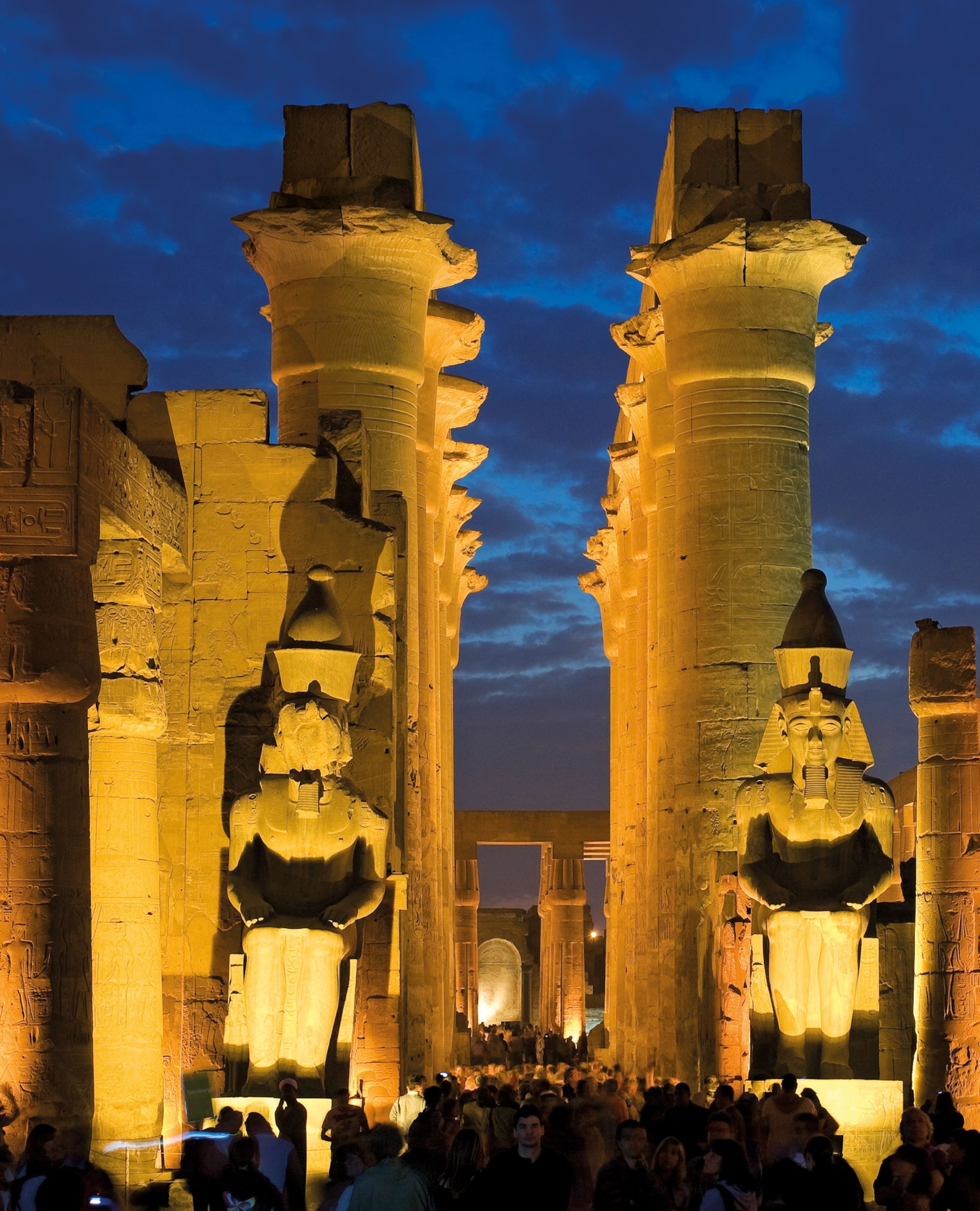
Opet’s fusion of majesty and popular merry-making helped forge a powerful bond between the people and their pharaoh during the New Kingdom. Centuries later, after Alexander the Great’s conquest of Egypt in 332 B.C., the conqueror’s agents in Thebes observed how the festival’s symbolic power could be adapted to confer divine legitimacy upon Alexander’s control of the region. Alexander built his own chapel in the Temple of Luxor and decorated the walls with his likeness in the presence of Amun-Re.
Opet celebrations are believed to have continued until Roman times. The feast and its divine parade finally fell out of favor after the rise of Christianity in Egypt when the old gods and the old ways were cast aside.

